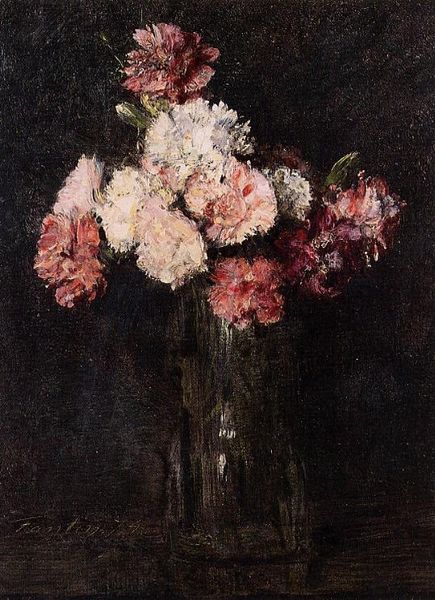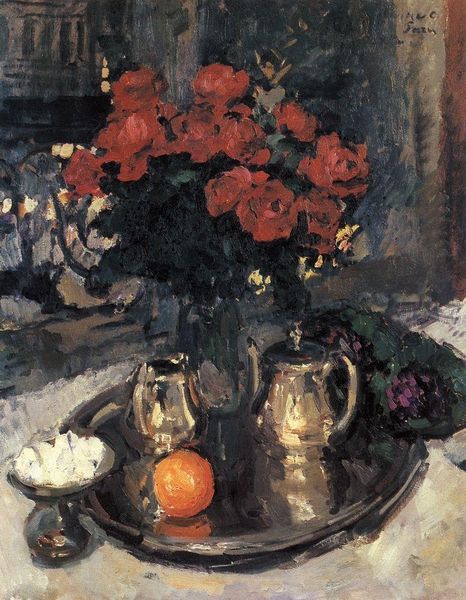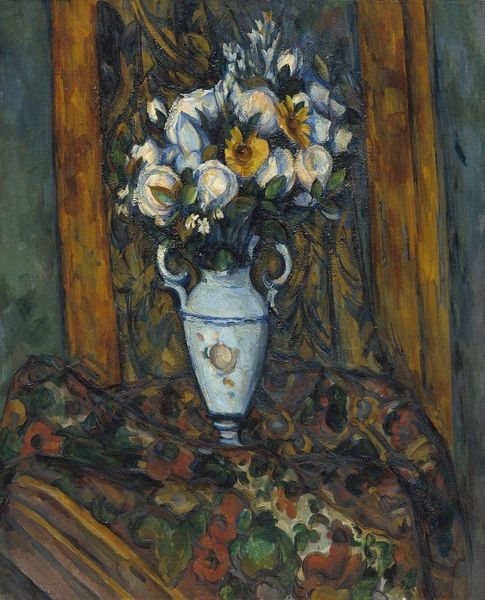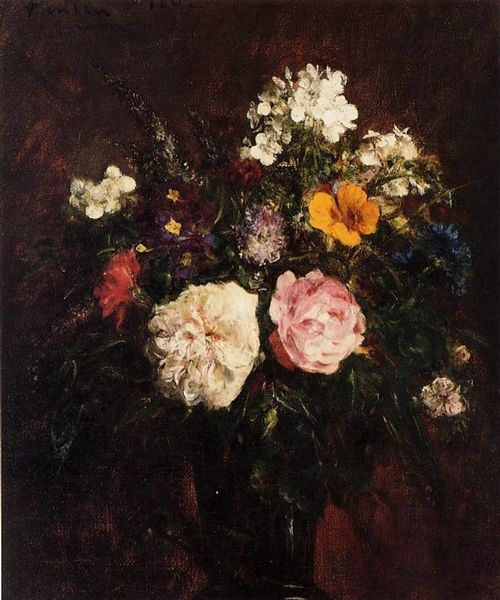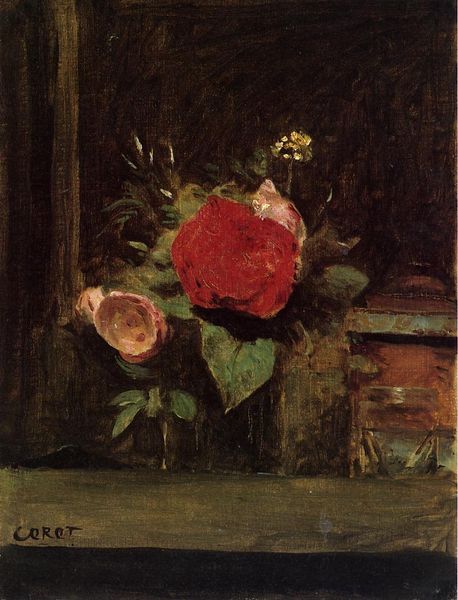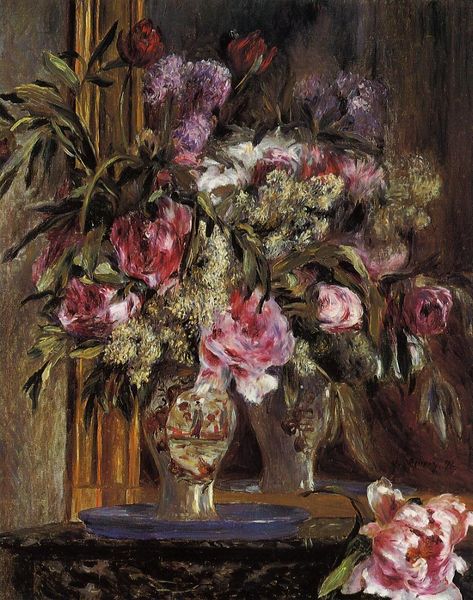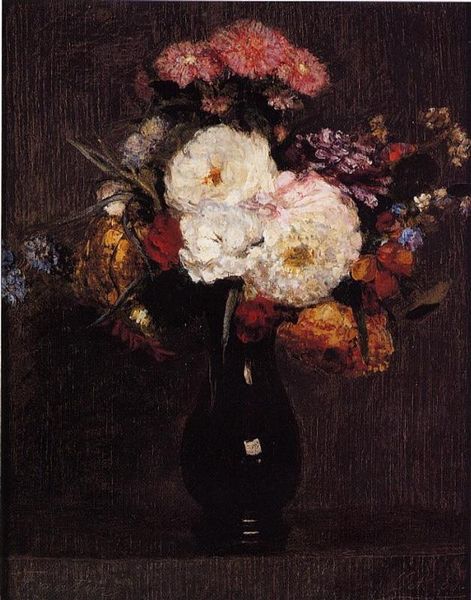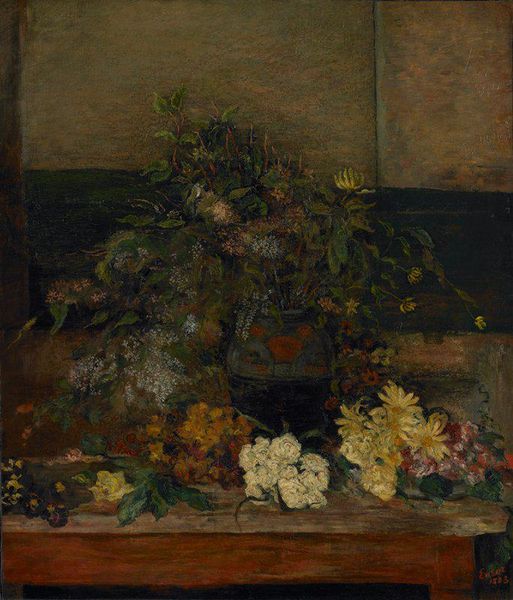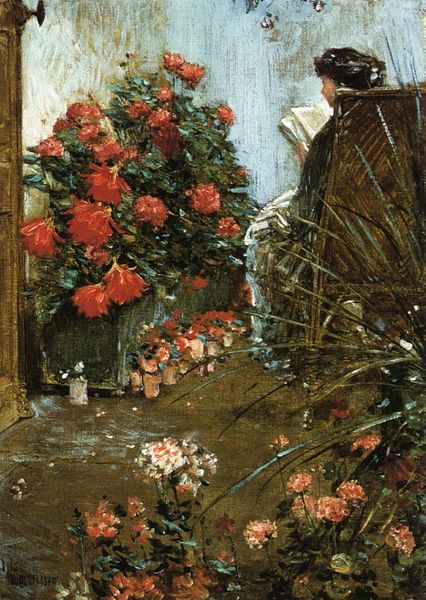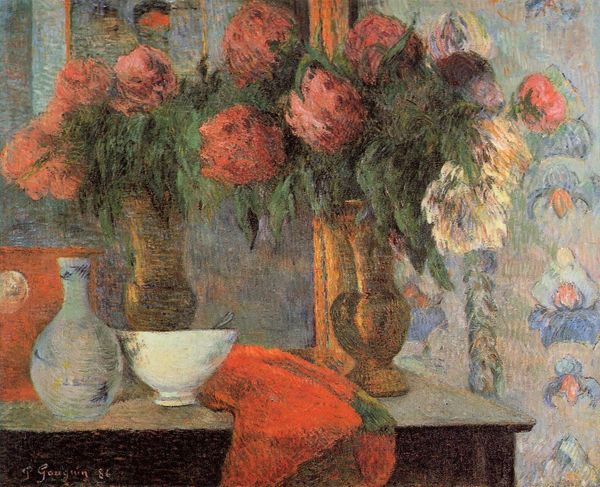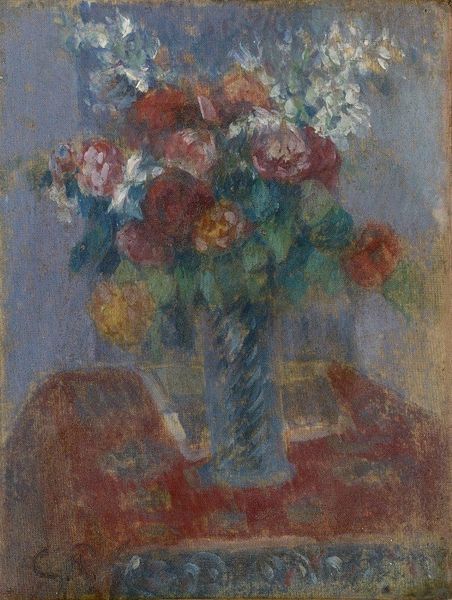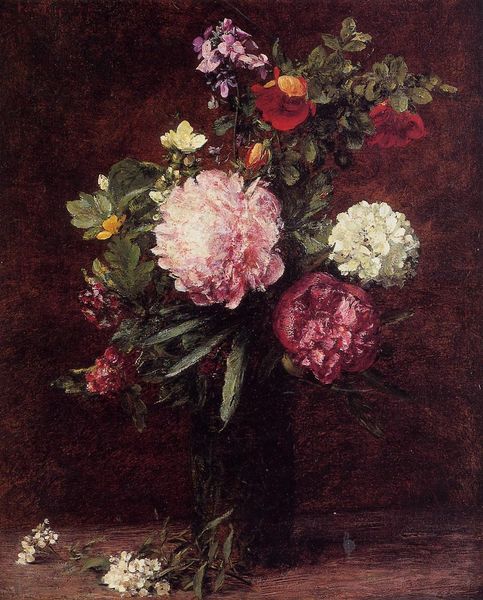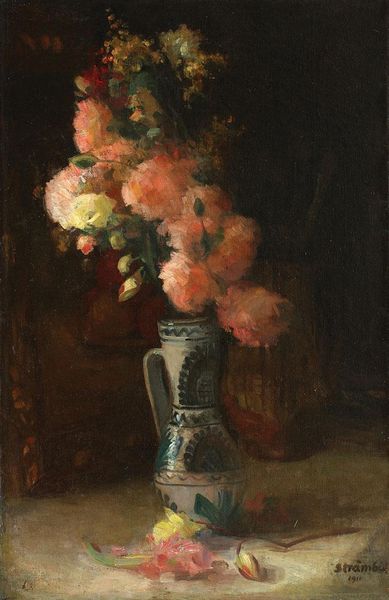
Copyright: Public domain
Editor: Standing here before "A Parisian Balcony," an oil painting created in 1908 by Konstantin Alexeevich Korovin, I'm struck by the composition; it's almost claustrophobic, yet the city lights offer a release. What stands out to you when you examine the artwork's formal qualities? Curator: The tension between interiority and exteriority is skillfully rendered through Korovin’s application of impasto and the stark contrast of light and dark. Note how the curvilinear ironwork of the balcony is juxtaposed against the orthogonal structure of the cityscape. Editor: The texture really gives the painting depth! How does Korovin use colour here to construct the scene? Curator: Observe how Korovin employs a limited palette, predominantly dark tones punctuated by highlights of creams and reds within the floral arrangement. This restricted color scheme is instrumental in achieving a sense of atmosphere, an intimate portrayal of urban existence through a window. Consider how the blurred treatment of the city background flattens the perspective. What affect does that contribute to the overall impression of the piece? Editor: It nearly becomes another abstract arrangement behind the definite form of the balcony itself. Thank you; thinking about the colour and flattened perspective really clarifies Korovin's aesthetic intentions in this work. Curator: Indeed. Formal analysis allows us to consider how meaning can arise not merely from representational content, but also from the very means by which that content is presented and constructed.
Comments
No comments
Be the first to comment and join the conversation on the ultimate creative platform.
